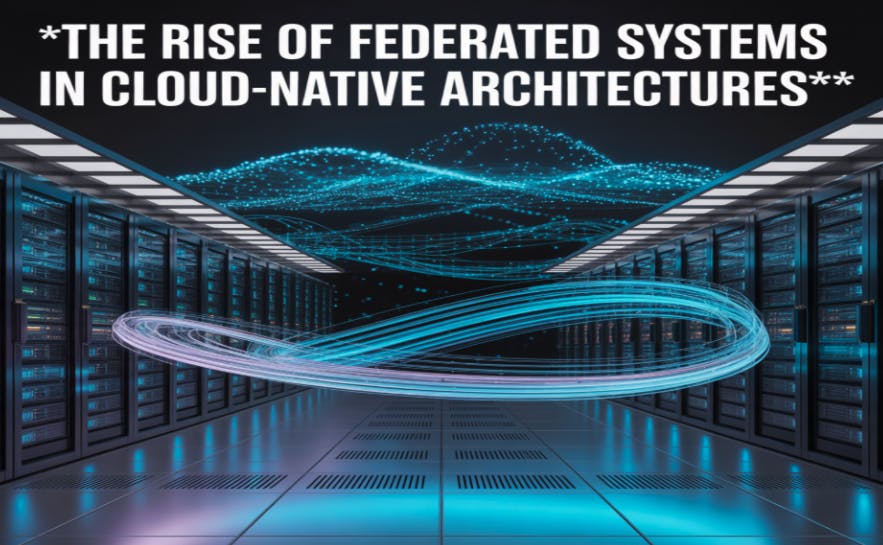Independent researcher Akhilesh Bollam presents a forward-looking perspective on federated systems in cloud-native environments. With years of independent research and analysis experience in decentralized architectures, his work highlights how innovations in federation are reshaping the digital ecosystem.
Moving Beyond Centralization
Traditional cloud computing models rely heavily on centralized repositories, but this approach increasingly clashes with modern demands for privacy, compliance, and scalability. Regulatory fines for mishandling cross-border data transfers rose by over 60% in the EU alone in 2023, underscoring the risks of centralization. Federated systems address these challenges by keeping data localized while enabling collaborative operations across distributed nodes. This hybrid model offers a pragmatic balance between usability and protection, particularly for organizations navigating strict regulatory environments such as healthcare (HIPAA), finance (Basel III), or government compliance regimes.
The Foundations of Federation
At the heart of federation lies the principle of data locality processing data where it originates while transmitting only essential updates. Benchmarks show that federated architectures reduce cross-network data transfers by 60–80% compared to centralized approaches. Topological models such as hierarchical, mesh, and hub-and-spoke arrangements provide flexibility, letting organizations align infrastructure with operational priorities. For example, a hub-and-spoke model works well in financial institutions with regional hubs, while mesh topologies fit research networks where resilience and peer-to-peer collaboration are critical.
Smarter Synchronization Protocols
Efficient synchronization ensures federation doesn’t overwhelm networks. Gossip protocols, already proven in large-scale distributed systems, reduce bandwidth by 30–50% through localized peer exchanges instead of global broadcasts. Differential synchronization adds another layer of efficiency by transmitting only changes. In one case study, a telecom provider running federated analytics across 5 million IoT devices cut synchronization costs by half, without sacrificing timeliness.
Privacy as a Cornerstone
Privacy-preserving technologies turn federation from a “good idea” into a practical solution.
- Homomorphic encryption enables secure computation on encrypted data.
- Secure multi-party computation (SMPC) allows organizations such as hospitals to jointly analyze datasets without ever exposing individual records.
- Differential privacy, pioneered by Apple, ensures that user-level data in predictive text and Siri voice recognition remains untraceable while preserving statistical utility.
The critique here is that while these techniques are mathematically robust, their computational overhead remains high. Real-world deployments show up to 40% performance slowdowns compared to non-encrypted pipelines, a hurdle that must be addressed for broader enterprise adoption.
Machine Learning Without Data Exposure
Federated learning (FL) is one of the most impactful applications of federation. Instead of centralizing raw data, FL distributes model training to local devices. Google has deployed FL across over 10 million Android devices, achieving accuracy within 1–2% of centralized models while reducing data transfer by up to 80%. Apple, similarly, uses FL to improve on-device keyboard predictions without exposing user typing data.
Emerging techniques such as model compression and selective updates are further reducing communication costs, making FL scalable across networks with millions of endpoints. Adoption is especially strong in healthcare (cross-hospital predictive modeling) and financial services (fraud detection without sharing customer identities).
Redefining Digital Identity
Federation extends naturally into identity management. Centralized identity systems remain prime targets for breaches, with over 60% of data breaches in 2022 traced to compromised credentials. Federated identity models like single sign-on (SSO) and federated OAuth—reduce exposure by distributing verification. The next frontier is self-sovereign identity (SSI), where users control their credentials via decentralized wallets. Governments in the EU are already piloting SSI frameworks for cross-border travel and healthcare access, pointing toward a future where federated identity becomes as critical as federated learning.
Enabling Cross-Border Collaboration
One of the biggest advantages of federation is compliance with diverse regulatory regimes. For instance, the European Health Data Space (EHDS) initiative relies on federated analytics to let hospitals collaborate across borders without transferring raw patient data. This ensures GDPR compliance while enabling breakthroughs in rare disease research. In Asia-Pacific, financial regulators are encouraging federated risk modeling to enable cross-border banking oversight without centralizing sensitive customer records.
Challenges on the Horizon
Despite momentum, hurdles remain:
- Performance: Bandwidth constraints and device resource limitations can slow adoption.
- Resilience: Handling node failures at scale remains unsolved; outages in one node can still disrupt clusters.
- Trust: Independent organizations must agree on verification and governance, a process often slowed by legal and political negotiation.
A critique worth noting is that federation is not a silver bullet. In some cases such as small-scale deployments or latency-critical applications centralized models still outperform federated alternatives.
Innovations Shaping the Future
The next wave of federation will be shaped by:
- Lightweight protocols for resource-constrained IoT and edge devices.
- Blockchain integration, providing tamper-proof audit trails for inter-organizational trust.
- Quantum-resistant cryptography, essential as federated systems handle sensitive long-term data like medical and financial records.
- Standardization through initiatives like ISO/IEC JTC 1, making integration more affordable and reducing vendor lock-in.
A Transformative Path Forward
Federated systems are not a passing trendthey are a structural evolution in cloud-native architecture. By blending privacy, compliance, and scalability, they are setting the foundation for the next generation of enterprise infrastructure. As adoption expands across industries, the convergence of federation with blockchain, advanced encryption, and self-sovereign identity will accelerate.


